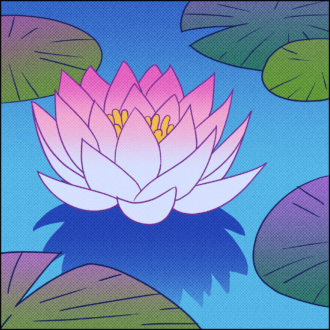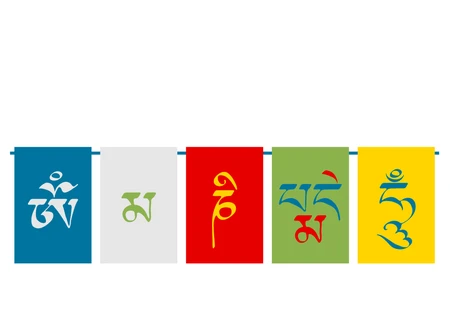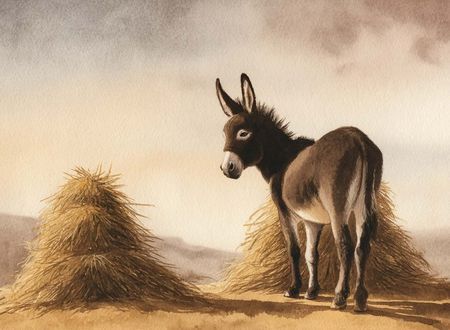
Om Mani Padme Hum helps achieve perfection of perseverance
Om Mani Padme Hum is the compassion mantra called by Buddhists worldwide and is known as a Buddhist mantra.
As written in Tibetian Buddhist Granthas, the mantra encapsulates all the kindness, compassion, and blessings of the buddhas and bodhisattvas. This embodies the special blessing of Avalokiteshvara.
Avalokiteshvara is a manifestation of Buddha’s form in Sambogakaya, the body of divine enjoyment.
The mantra Om Mani Padme Hum is of Tibetan origin and has several translations depending on the school of Buddhism. It is a prevalent mantra in Tibet, Mongolia, and the Himalayas. Many schools of Buddhism in this region believe that the deity Avalokiteshvara is responsible for healing, compassion, and protection from danger. As you read ahead, this article shares deeper meaning of om mani padme hum mantra.

The Sanskrit mantra translates to “Om Jewel in the Lotus” or “Om Great Jewel in the Lotus.” The first part of this mantra is known as a seed syllable, which represents compassion and wisdom.
The second part represents Avalokiteshvara themself (depending on the school). In some Tibetan schools, it also means Buddha Shakyamuni, who appeared in human form to help humankind achieve enlightenment and nirvana.
This mantra embodies the Buddha’s compassion for all beings in its purest form. Avalokiteshvara is the most significant Buddha and the karmic deity of Buddhists, just as Padmasambhava is their most revered guru.
Compassionate Buddha became so ingrained in Buddhist thought that any youngster who could speak the word “mother” could also recite the chant OM MANI PADME HUM.
What is the story behind the mantra?
Avalokiteshvara’s compassion

A thousand princes pledged to become Buddhas countless centuries ago. One decided to become the Buddha we know as Gautama Siddhartha, while Avalokiteshvara swore not to become enlightened until every other one of the thousand had also become a Buddha.
He promised to free all sentient beings from the miseries of many realms of samsara out of his boundless compassion.
He prayed: “May I aid all beings, and if ever I tire in this enormous labor, may my body be smashed into a thousand pieces,” in front of the Buddhas of the Ten Direction. According to legend, he began by descending into the regions of hell before gradually going up through the world of greedy ghosts to the realm of the gods.
He was horrified to observe that even though he had rescued many creatures from hell, countless more were flooding in. This caused him to experience the worst anguish, and for a short period, he nearly lost faith in the noble vow he had made, causing his body to shatter into a million pieces.
In desperation, he cried out to the Buddhas, who, according to one story, rushed to rescue him from every corner of the universe like a gentle snowstorm.
The Avalokiteshvara was a powerful being with eleven heads, a thousand arms, and an eye on the palm of each hand, representing the confluence of wisdom and skillful methods that is the hallmark of genuine compassion.
He was even more beautiful and empowered to aid all beings in this form. His mercy grew ever more vital as he repeatedly vowed before the Buddhas: “May I do not achieve final Buddhahood before all sentient beings attain enlightenment.”
Suffering of Samsara and two Taras
According to legend, the Buddha’s blessings caused two tears to fall from his eyes as he grieved the suffering of samsara; these two tears were then turned into the Two Taras.
One is Tara in her green form, representing compassion in action, and the other is Tara in her white form, which means the maternal side of compassion. The meaning of the name Tara is “she who liberates” or “she who crosses the river of samsara.”
Mahayana Sutra
According to the Mahayana sutra, Avalokiteshvara presented his mantra to the Buddha, who then charged him with the duty of assisting all sentient creatures in the cosmos in attaining enlightenment. The ground trembled at this action, and all the gods showered them with flowers. The air also reverberated with the sound of OM MANI PADME HUM HRIH.
What do the syllables mean?
Impact of the six syllables
According to the teaching, the mantra OM MANI PADME HUM includes six syllables, each of which has a unique and powerful impact on bringing about change at various levels of our being.
Om Mani Padme Hum symbol

The six syllables purify the six toxic negative emotions that are the outward manifestation of ignorance and drive us to misbehave with our bodies, speech, and minds, bringing about samsara and our suffering inside it.
The mantra transforms pride, envy, want, ignorance, greed, and anger into their true natures, the knowledge of the six Buddha families that manifest in the enlightened mind.
Purification of the six destructive emotions
Therefore, the six destructive emotions responsible for the six realms of samsara are purified when we recite OM MANI PADME HUM. This is how chanting the six syllables end the suffering inherent in each of the six realms and prevents reincarnation.
In addition to perfecting the six types of transcendental action of the heart of the enlightened mind, the paramitas of generosity, reciting OM MANI PADME HUN, simultaneously purifies the aggregates of ego, the Skandhas, and grants strong protection from all types of harmful influences and various illnesses.
The seed syllable
Avalokiteshvara’s “seed-syllable,” HRIH, is frequently added to the mantra to form OM MANI PADME HUM HRIH. The trigger that ignites the Buddha’s compassion and changes our negative emotions into their wisdom nature is HRIH, the essence of all the Buddhas’ compassion.
“According to another interpretation of the mantra, the final word, HUM, stands in for the mind of enlightenment. MANI PADME, the first four syllables in the center, signifies the speech of civilization.
All beings reach the stage of realization through the combination of the body, speech, and mind. The transformational power of the mantra emerges and grows when combined with our faith and efforts during meditation and repetition.
The meaning of the mantra Om Mani Padme Hum
Each word is dissected into different syllables, and every syllable has a meaning. Let’s dive deeper into the importance of each syllable.
Om Mani Padme Hum is a powerful mantra for miracles, which means “Hail to the Jewel in the Lotus”. This mantra is also known as the ‘Six-syllable Mantra’, and is one of the most well-known mantras in Tibetan Buddhism. It can be used for meditation, healing, and spiritual development.
The mantra has six syllables, and each represents a form of perfection (paramita). These are essentially different versions of the qualities of the Five Wisdom Buddhas.
- Om – This sound represents generosity. This purifies pride and ego.
- Ma – This sound represents ethics. This purifies jealousy.
- Ni – This sound represents patience. This purifies excessive passion and desire.
- Pad – This sound represents diligence. This purifies ignorance and prejudice.
- Me – This sound represents renunciation. This purifies possessiveness and greed.
- Hum – The sound hum represents wisdom. This purifies aggression and hatred. Source – Meaning of Om mani padme hum
Om
Three letters make up the first, Om. U, A, and M represent the practitioner’s polluted body, speech, and mind and the Buddha’s elevated, pure body, speech, and mind.
Buddhism doesn’t claim that someone is born without flaws and endowed with only positive traits; instead, it says that all Buddhas are examples of beings who were like us before becoming enlightened in dependence on the road.
As one gradually leaves the impure stages and transforms into the pure body, speech, and intellect emerge.
Mani
Mani, which means jewel in Sanskrit, stands for the three pillars of the method: love, compassion, and the selfless desire for enlightenment.
The altruistic mind of enlightenment can eliminate poverty, problems, cyclic existence, and solitary tranquility, just as a jewel can eradicate poverty. Similar to how a jewel satisfies the desires of sentient beings, so does the selfless goal to attain enlightenment.
Padme
As a lotus emerges from mud yet is untarnished by mud’s flaws, wisdom can put you in a situation where there is no contradiction, whereas there would be a contradiction if you did not know.
The two syllables Padme, which means lotus, represent wisdom. The wisdom that recognizes impermanence, wisdom that acknowledges people lack the capacity for self-sufficiency or substantial existence, the knowledge that realizes the emptiness of duality—that is, the separation of the subjects and objects of interaction—and wisdom that recognizes the emptiness of inherent existence.
Hum
Hum is a syllable that symbolizes compassion, love, and wisdom. We connect with our inner Buddha nature by reciting this mantra and developing these qualities.
The Tibetan Guru Dalai Lama says

The Tibetan Guru Dalai Lama says, “The six syllables, Om Mani Padme hum, mean that in dependence on the practice of a path which is an indivisible union of method and wisdom, you can transform your impure body, speech, and mind into the pure exalted body, speech, and mind of a Buddha.”
Recitation
There is a specific technique for chanting the mantra. Follow these procedures to avail the exclusive benefits of chanting the mantra.
- Sit comfortably in a quiet place, with the spine straight.
- Take deep breaths to clear and calm your mind. For better results, use the 4-7-8 technique. (four counts to breathe in, seven counts hold the breath and eight counts to breath out)
- Recite the mantra ‘OM MANI PADME HUM’ slowly in your mind.
- Usually, the mind drifts away. Allow yourself to take a mental leash and come back to the mantra gently.
- Repeat the mantra 108 times. You can also use bead mala for this purpose.
- End your meditation gently by taking a few deep breaths for a few minutes.
Source: Recitation of mantras
What powers does reciting this mantra have?
This benefit is incredible, particularly if you wish to heal people. Anyone who sees you in a public setting has their bad karma purified, meaning they won’t be born again in the lower realms.
If there are many people below you and you are on top of a hill, when they gaze at you, all their bad karma is purified. As a result, you acquire significance. This occurs as a result of the mantra’s effectiveness as well as your visualization of Chenrezig. Your body is blessed. As a result, they are becoming relics. Anyone who views you in that way will have their lousy karma cleaned.
Om Mani Padme Hum miracles
The most well-known of the om mani padme hum miracles is the one performed by Padmasambhava, who is a legendary Buddhist teacher and founder of the Tibetan school of Buddhism. He is said to have uttered this mantra to subdue a group of demons that were threatening to destroy his monastery.
The mantra is commonly translated as “Hail to thee, O merciful Lord, who dost liberate from suffering!” or “Oh merciful Lord, grant me peace!” It is often said to bring about a feeling of peacefulness and harmony, which can help with various physical, emotional, and spiritual ailments. It is also believed to have divine powers that can be used to perform miracles, such as healing the sick or driving away evil spirits.
One version of the story goes that when Padmasambhava meditated in his monastery, he saw a group of demons approaching him. They were angry and threatening because they had been banished from heaven and had taken it upon themselves to cause trouble on earth. They were armed with swords and spears and intended to attack Padmasambhava’s monastery.
To protect himself and his disciples, Padmasambhava began reciting the om mani padme hum mantra. The words began to have an immediate effect on the demons: their anger dissipated, their swords fell from their hands, and their spears became useless as they dropped them from their grasp. In awe of this display of power, many of the disciples gathered around Padmasambhava to witness his power over these dangerous creatures.
It was at this point that Padmasambhava realized that he needed a more powerful form of protection against the demons. He took out a small knife and cut off one of his fingers, which he then threw at the demons. As the finger made contact with them, they were instantly incinerated. This display of ultimate power finally convinced the remaining demons to leave in peace and not cause any more trouble.
From then on, Padmasambhava was known as “The Lotus-Born” because he had emerged victorious from this confrontation with the help of the om mani padme hum mantra.
Benefits of Om Mani Padme Hum in a nutshell:
It looks very simple, very easy to recite. But if you think of the benefits, it’s not at all simple. Here, I’d like to mention just the essence of its infinite benefits.
- Reciting the Compassion Buddha mantra just once completely purifies the four defeats of breaking the four root vows of self-liberation and the five uninterrupted negative karmas.
- It is also mentioned in the tantras that by reciting this mantra you achieve the four qualities of being born in the Amitabha Buddha pure land and other pure lands; at the time of death, seeing Buddha and lights appearing in the sky; the devas making you offerings; and never being reborn in the hell, hungry ghost or animals realms. You will be reborn in the pure land of Buddha or as a happy transmigratory being.
Om Mani Padme Hum benefits:
- Om Mani Padme Hum is an ancient mantra that Guru Rinpoche taught his disciple, Yeshe Tsogyal. Millions of people have practiced the mantra over the centuries, one of the most common Buddhist mantras.
- This powerful mantra carries the blessings of all enlightened beings and therefore brings immediate results when recited with faith.
- The mantra can be used by anyone regardless of religion or belief system, as it is not connected to any particular deity or religious sect.
- The practice of this mantra helps us develop compassion for others and also strengthens our connection with our mind, which in turn gives us more control over our thoughts and emotions. This makes it easier for us to achieve enlightenment through meditation on emptiness (shunyata).
Translations
- Hindi : ॐ मणि पद्मे हूँ
- Tamil: ௐ மணி பத்மே ஹூம்
- Sanskrith: ॐ मणि पद्मे हूँ
- Russian: Ом мани падме хум
- Bengali: ওঁ মণি পদ্মে হূঁ
- Assamese: ওঁ মণি পদ্মে হূঁ
- Nepali: ॐ मणि पद्मे हूँ
- Malayalam: ഓം മണി പദ്മേ ഹും
- Odia: ଓଁ ମଣି ପଦ୍ମେ ହୁଁ
- Burmese: ဥုံမဏိပဒ္မေဟုံ
- Marathi: ॐ मणि पद्मे हूँ
- Punjabi: ਓਮ ਮਣਿ ਪਡਮੇ ਹੂਁ
- Kannada: ಓಂ ಮಣಿ ಪದ್ಮೇ ಹುಂ
- Vietnamese: Án ma ni bát mê hồng
- Sinhala: ඕං මණි පද්මේ හුං
Takeaway
This mantra is one of the most powerful mantras in the world, like the Gayatri mantra. This mantra is so peaceful and profound that it brings a harmonious life.
It is said to purge the dirt and sludge until we are as brilliant, pure, compassionate, and wise as the lotus flower itself by reciting it repeatedly with the right intention.
The Dalai Lama said in a lecture that while it is advisable to recite this mantra repeatedly, one must also focus on the significance of each syllable.
When chanted with this meaning, the mantra Om Mani Padme Hum is a potent tool to aid your spiritual development. It will help you overcome obstacles and gain wisdom by purifying your body, mind, and speech.
For all these reasons, it is one of the most profound Buddhist mantras you can learn. Use it wisely!









Comments & Discussion
0 COMMENTS
Please login to read members' comments and participate in the discussion.